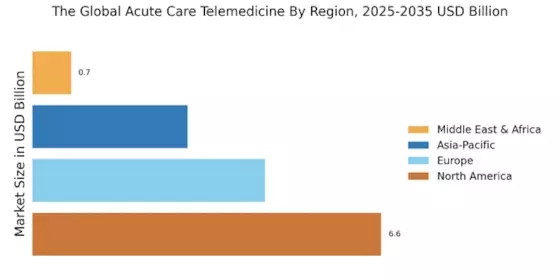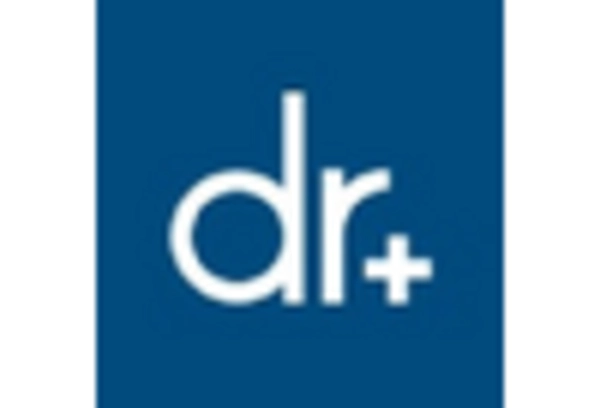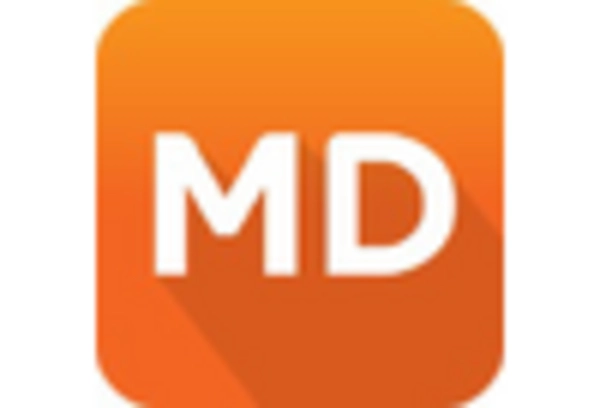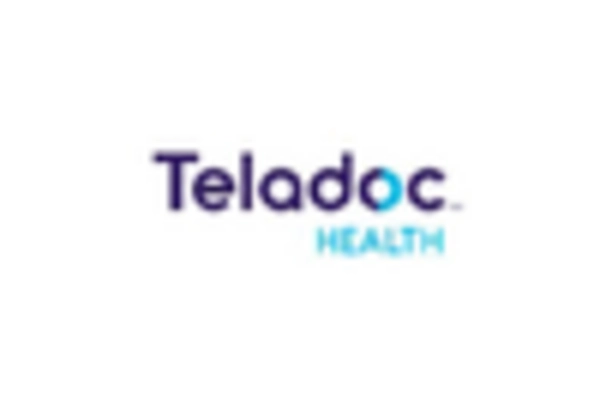Increased Focus on Preventive Healthcare
The growing emphasis on preventive healthcare is a significant driver for the Acute Care Telemedicine Market. With rising healthcare costs and a shift towards value-based care, healthcare systems are prioritizing preventive measures to reduce the incidence of chronic diseases. Telemedicine enables proactive health management through regular check-ups and monitoring, which can lead to early detection of health issues. Recent statistics suggest that preventive care can reduce hospital admissions by approximately 30%. This focus on prevention is likely to propel the demand for telemedicine services, as patients and providers alike recognize the benefits of early intervention.
Technological Advancements in Telemedicine
Technological advancements play a crucial role in shaping the Acute Care Telemedicine Market. Innovations such as high-definition video conferencing, mobile health applications, and wearable devices enhance the quality of remote consultations. These technologies not only improve patient engagement but also facilitate real-time monitoring of health conditions. Data indicates that the integration of advanced technologies could potentially increase the efficiency of telemedicine services by up to 40%. As healthcare providers adopt these innovations, the market is expected to witness substantial growth, driven by the demand for more effective and efficient telehealth solutions.
Growing Acceptance Among Healthcare Providers
The growing acceptance among healthcare providers is a key driver for the Acute Care Telemedicine Market. As more providers recognize the benefits of telemedicine, including increased patient satisfaction and improved workflow efficiency, adoption rates are rising. Surveys indicate that over 70% of healthcare professionals believe telemedicine enhances their ability to deliver care. This shift in perception is likely to lead to a broader implementation of telehealth services across various specialties. Consequently, the Acute Care Telemedicine Market is expected to expand as more providers integrate telemedicine into their practice, responding to the evolving needs of patients.
Supportive Government Policies and Initiatives
Supportive government policies and initiatives are instrumental in fostering the growth of the Acute Care Telemedicine Market. Many governments are implementing regulations that promote telehealth services, recognizing their potential to enhance healthcare delivery. For instance, reimbursement policies for telemedicine consultations are becoming more favorable, encouraging healthcare providers to adopt these services. Additionally, public health campaigns aimed at educating citizens about telemedicine are gaining traction. This supportive environment is likely to stimulate market growth, as both providers and patients become more aware of the benefits and availability of telehealth options.
Rising Demand for Accessible Healthcare Services
The increasing demand for accessible healthcare services is a pivotal driver for the Acute Care Telemedicine Market. As populations grow and age, the need for immediate medical attention escalates. Telemedicine offers a solution by bridging the gap between patients and healthcare providers, particularly in remote or underserved areas. According to recent data, approximately 60% of patients express a preference for telehealth services due to convenience and reduced travel time. This trend is likely to continue, as more individuals seek timely medical interventions without the constraints of traditional healthcare settings. The Acute Care Telemedicine Market is thus positioned to expand significantly, catering to this growing need for accessible healthcare.


















Leave a Comment